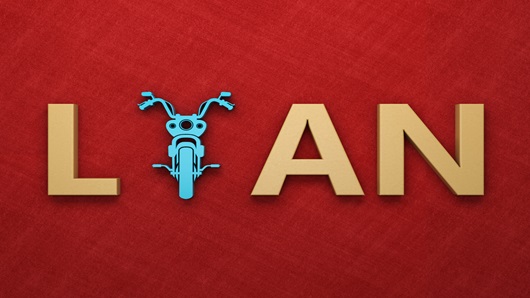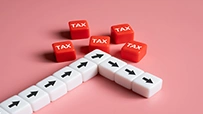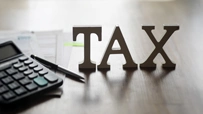Fixed or Floating Interest Rate Two-Wheeler Loan: Which One Should You Choose?
December 09, 2024

Generally, banks offer customers two types of Two-Wheeler Loans - floating interest rate loans and fixed interest rate loans. Selecting either of these can impact your loan EMI (Equated Monthly Instalment). In this article, we have simplified the key differences between a fixed and floating interest two-wheeler loan so that you make an informed decision while availing the loan.
Understanding Fixed and Floating Interest Rates
1. Fixed Interest Rate Loans
As the name suggests, for fixed interest rate loans, the interest rate remains constant throughout your two-wheeler loan tenure. Your prevailing EMI obligations will stay the same, even if the bank decided to alter the interest rates, making financial planning more predictable. Fixed rates are usually 1-2.5% higher than floating rates.
Example: Let's say you take a bike loan of ₹75,000 at a fixed interest rate of 10% p.a. for a 3-year tenure. Your EMI will remain ₹2,530 for all 36 months. The total interest outgo will be ₹16,075.
2. Floating Interest Rate Loans
For floating interest rate two-wheeler loans, the rate can change periodically based on market conditions and the financier's policies. Your EMIs can increase or decrease accordingly. Floating rates are linked to the lender's base rate and are generally lower than fixed rates.
Example: For the same ₹75,000 bike loan, if you opt for a floating interest rate of 8.5%, your initial EMI will be ₹2,414. But if the rate increases to 9% after a year, the EMI will increase to ₹2,447 for the remaining tenure.
Factors to Consider When Choosing Fixed vs Floating Interest Two-Wheeler Loan
1. Loan Tenure
For shorter tenures, like 3-4 years, a fixed rate may be better as rate fluctuations won't significantly impact the overall interest. For longer tenures, a floating rate can be cost-effective.
2. Interest Rate Trends
If rates are expected to fall, a floating rate can help you benefit from lower EMIs in the future. But if rates are likely to rise, locking into a fixed rate makes sense. Compare both options and make an informed loan rate selection.
3. Risk Appetite
Fixed rates offer more certainty and suit risk-averse borrowers. If you are comfortable with some uncertainty and want to benefit from rate drops, floating rates may work better.
4. Prepayment Flexibility
Some lenders may charge a prepayment penalty on fixed-rate loans if you close the loan early. Floating rate loans don't have any loan foreclosure or prepayment charges.
Final Thoughts
Choose a fixed or floating interest rate two-wheeler loan based on your needs, risk profile, and market outlook. Fixed rates offer stability while floating rates can be cost-effective if rates fall.
Planning to get your dream bike home but short on funds Ujjivan SFB offers the super convenient Chakra Loan. Enjoy competitive interest rates, financing up to 95% of the on-road price of the vehicle, minimal documentation, quick disbursal, and more!
Disclaimer:
The contents herein are only for informational purposes and generic in nature. The content does not amount to an offer, invitation or solicitation of any kind to buy or sell, and are not intended to create any legal rights or obligations. This information is subject to updation, completion, amendment and verification without notice. The contents herein are also subject to other product-specific terms and conditions, as well as any applicable third-party terms and conditions, for which Ujjivan Small Finance Bank assumes no responsibility or liability.
Nothing contained herein is intended to constitute financial, investment, legal, tax, or any other professional advice or opinion. Please obtain professional advice before making investment or any other decisions. Any investment decisions that may be made by the you shall be at your own sole discretion, independent analysis and evaluation of the risks involved. The use of any information set out in this document is entirely at the user’s own risk. Ujjivan Small Finance Bank Limited makes no representation or warranty, express or implied, as to the accuracy and completeness for any information herein. The Bank disclaims any and all liability for any loss or damage (direct, indirect, consequential, or otherwise) incurred by you due to use of or due to investment, product application decisions made by you on the basis of the contents herein. While the information is prepared in good faith from sources deemed reliable (including public sources), the Bank disclaims any liability with respect to accuracy of information or any error or omission or any loss or damage incurred by anyone in reliance on the contents herein, in any manner whatsoever.
To know more about Ujjivan Small Finance Bank Products Visit:"https://www.ujjivansfb.in"
All intellectual property rights, including copyrights, trademarks, and other proprietary rights, pertaining to the content and materials displayed herein, belong
to Ujjivan Small Finance Bank Limited or its licensors. Unauthorised use or misuse of any intellectual property, or other content displayed herein is strictly prohibited and the same is not intended for distribution to, or use by, any person in any jurisdiction where such distribution or use would (by reason of that person’s nationality, residence or otherwise) be contrary to law or registration or would subject Ujjivan Small Finance Bank Limited or its affiliates to any licensing or registration requirements.
FAQs
1. Can I switch from a floating to fixed interest rate during my bike loan tenure?
Most banks do not allow switching from floating to fixed rates or vice versa during the loan tenure. Check with your bank for better clarity.
2. Are shorter loan tenures always better in terms of interest rates?
Shorter loan tenures generally come with lower interest rates but higher EMIs. Choose a tenure that aligns with your repayment capacity.
3. How to check my two-wheeler loan EMI?
You can use Two-Wheeler Loan EMI Calculator to check your EMI obligations. Such calculators are extremely easy-to-use and feature a user-friendly interface. All you need to do is enter the loan amount, tenure and interest rate. Once done, the calculator would show you the EMI amount.
Latest Blogs

Dussehra 2025: How to Win Your Financial Battles with Smart Saving
Dussehra 2025 (also known as Vijayadashami) falls on Thursday, October 2, 2025.

eSIM Scam in India: I4C Warns Mobile Users About Rising Fraud – How to Stay Safe
The Indian Cybercrime Coordination Centre (I4C), a wing of the Ministry of Home Affairs, issued a strong warning to mobile users about the rapid increase in eSIM fraud in India.

How to Link PAN with Aadhaar: Step-by-Step Guide & Consequences of Not Linking
Linking your Permanent Account Number (PAN) with your Aadhaar is no longer just a best practice.

Annual Information Statement (AIS): A Complete Guide for Stress-Free ITR Filing
India’s tax season is in its final stretch.

ITR-1 (Sahaj) Restrictions: Income Sources Not Allowed & Filing Rules
With just a few days left before the 15 September 2025 deadline for filing Income Tax Returns (ITRs) for Assessment Year (AY) 2025-26, many taxpayers are rushing to submit their forms online.





